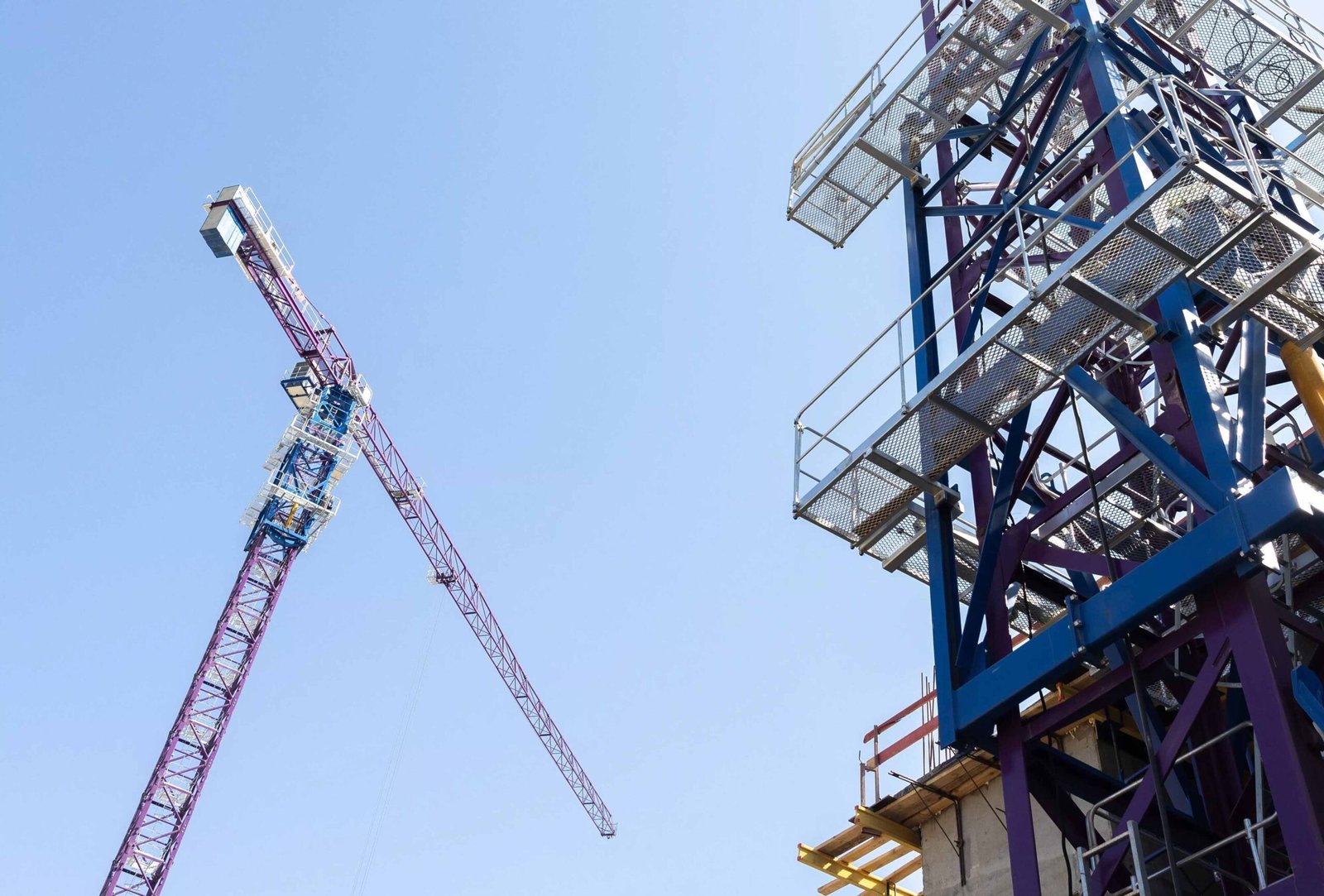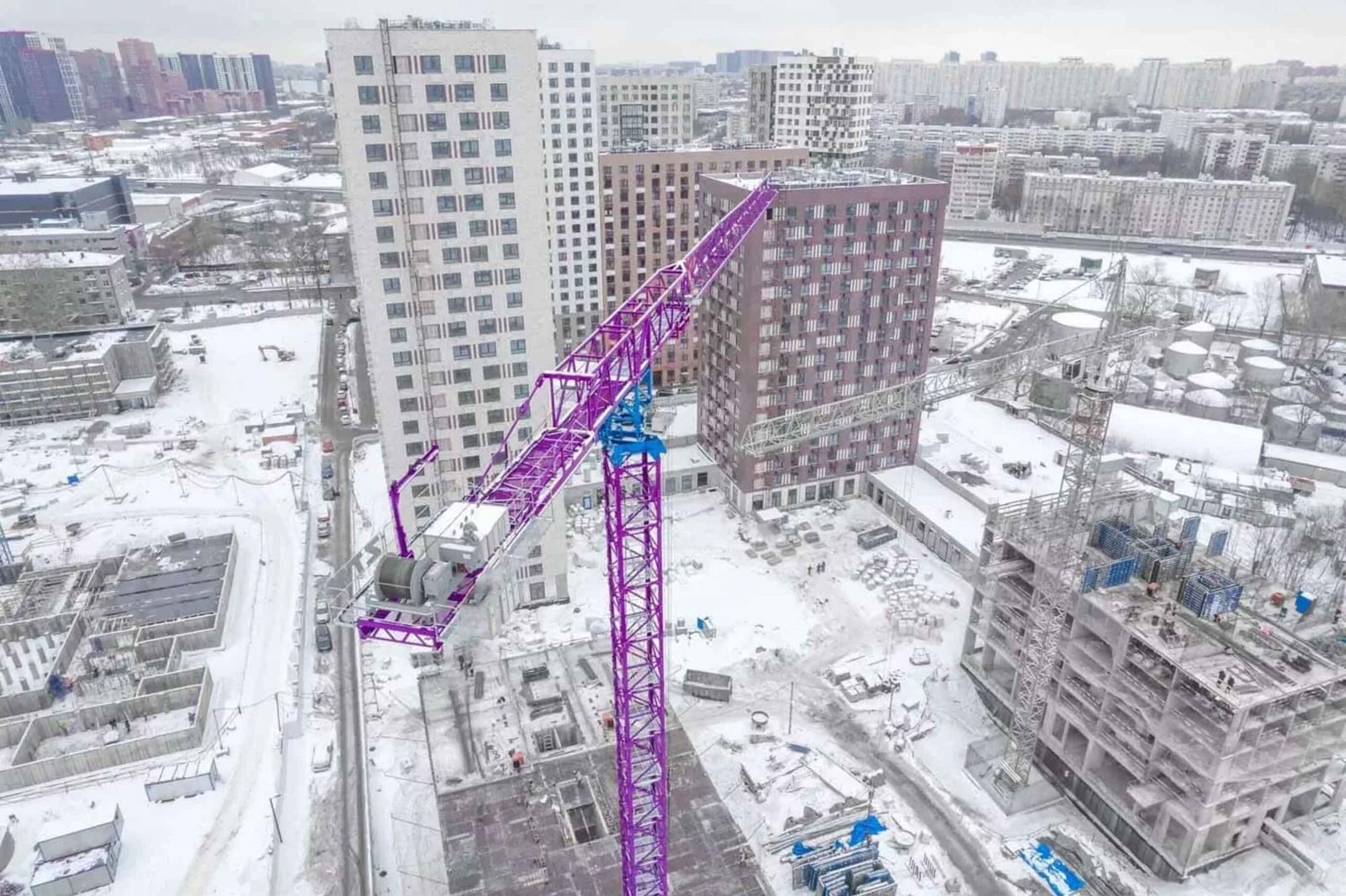
Tower cranes are among the most powerful machines on construction sites, but how much weight can they actually lift? Let’s explore the maximum capacity of tower cranes and see how they compare to other lifting machines.
Tower cranes1 have impressive lifting capacities, but the weight they can lift depends on various factors like crane size, configuration, and the load’s distance.
Tower cranes can lift a range of weights, from light materials to massive loads. Understanding their maximum lifting capacity requires a closer look at the crane’s design and intended use.
How Much Weight Can Tower Cranes Lift?

Tower cranes are built to lift heavy materials, but how much weight can they handle? The capacity can vary significantly depending on the crane’s size and configuration.
The weight a tower crane can lift depends on its model2 , range, and lifting configuration, with typical capacities ranging from 10 to 20 tons.
On average, tower cranes can lift between 10 to 20 tons, but certain models can exceed these limits. The maximum weight is determined by factors like the crane's height, the length of the jib (arm), and the counterweight configuration.
Factors Affecting Lifting Capacity
- Crane Size and Model3: Larger tower cranes, like the hammerhead or flat-top models, can lift heavier loads compared to smaller, more compact cranes.
- Jib Length4: The length of the crane's jib plays a crucial role. The longer the jib, the less weight the crane can lift at maximum distance.
- Counterweights: Tower cranes are equipped with counterweights that ensure balance when lifting heavy loads. The amount of counterweight directly impacts the maximum lift.
| Crane Model | Typical Lifting Capacity | Features |
|---|---|---|
| Smaller Cranes | 10-20 tons | Compact, versatile for tight spaces |
| Large Tower Cranes | 40-100 tons | Suitable for large construction projects |
While the standard range is 10-20 tons, larger cranes can handle far heavier loads.
Can a Crane Lift 2 Million Pounds?

While tower cranes are powerful, can they really lift 2 million pounds? Let's break down how extreme this weight is in terms of crane lifting capacities.
Tower cranes cannot lift 2 million pounds; this weight is beyond the capacity of even the largest cranes used in construction.
2 million pounds (approximately 900 tons) is far beyond the lifting capacity of any standard tower crane. Such weight is more suited to specialized cranes, like heavy-lift cranes used in industrial projects.
What Lifts 2 Million Pounds?
To lift 2 million pounds, you would need a crawler crane5 or a large ship-mounted crane6 that specializes in heavy lifting. These cranes are capable of lifting massive loads due to their specialized design and powerful hydraulics.
| Crane Type | Lifting Capacity | Application |
|---|---|---|
| Tower Crane | Up to 100 tons | Construction of tall buildings |
| Crawler Crane | 3,000 tons | Heavy industrial lifting |
No tower crane, even the largest models, can manage loads as heavy as 2 million pounds.
Is There a Crane That Can Lift 1000 Tons?

While tower cranes are powerful, can they lift 1000 tons? This seems like a massive load—let’s see how crane capacities measure up.
Yes, cranes like the crawler crane7 and specialized heavy-lift cranes can lift up to 1000 tons, but tower cranes cannot.
Some specialized cranes, such as the crawler crane, can lift up to 1000 tons, but this is not possible for tower cranes. These cranes have much larger lifting capacities, designed for industrial applications like oil rigs, heavy machinery placement, and large-scale infrastructure projects.
Heavy-Lift Cranes for 1000 Tons
For lifting weights of 1000 tons, you would typically use:
- Crawler Cranes: These cranes are designed to move heavy loads on rough terrain and can handle massive weights.
- Floating Cranes8: Used for offshore construction, these cranes can lift extremely heavy loads, including 1000 tons or more.
| Crane Type | Lifting Capacity | Ideal For |
|---|---|---|
| Tower Crane | 10-100 tons | Vertical construction projects |
| Crawler Crane | 1000 tons | Heavy industrial and offshore lifting |
A tower crane simply isn’t designed for this level of lifting.
Can a Crane Lift 20 Tons?

A 20-ton load is within the lifting capacity of many tower cranes. But how do cranes achieve this?
Tower cranes can lift loads of up to 20 tons or more, depending on the crane’s size and configuration.
Many tower cranes, especially those used for building high-rises, are built to lift loads in the 10-20 ton range. This makes them perfect for moving materials like steel beams, concrete blocks, and large equipment.
Lifting 20 Tons
For a crane to lift 20 tons, several factors must be considered:
- Counterweights9: A tower crane needs the appropriate counterbalance to safely lift 20 tons.
- Jib Length: As the jib extends further, the crane’s lifting capacity decreases. At full extension, a tower crane might only be able to lift a portion of that 20-ton load.
| Crane Type | Lifting Capacity | Example Application |
|---|---|---|
| Medium Tower Cranes | 10-20 tons | General construction and high-rises |
| Heavy-duty Cranes | 30-50 tons | Large infrastructure projects |
Crane models with capacities of 20 tons or more are commonly used in major construction projects.
Can a Crane Lift 1500 Tons?

When you talk about lifting 1500 tons, can a crane really handle that? Let’s explore what kind of cranes are capable of such heavy lifting.
SCranes capable of lifting 1500 tons are typically not tower cranes but massive heavy-lift or crawler cranes.
Tower cranes cannot lift 1500 tons—this weight is reserved for specialized cranes. Heavy-lift cranes, particularly crawler cranes or large floating cranes, are designed to handle such extreme loads.
Heavy-Lift Cranes for 1500 Tons
Cranes designed for lifting 1500 tons are usually:
- Crawler Cranes: These cranes are built for heavy industrial work, including lifting large machinery and equipment.
- Floating Cranes: Used for offshore platforms or other large-scale industrial applications, floating cranes can handle loads of 1500 tons or more.
| Crane Type | Lifting Capacity | Application |
|---|---|---|
| Tower Crane | Up to 100 tons | Skyscrapers, bridges, etc. |
| Crawler Crane | 1500 tons | Heavy industrial lifting, shipbuilding |
For loads over 1500 tons, you would need specialized equipment designed specifically for heavy-duty tasks.
Can a Crane Lift 40 Tons?

40 tons is within the capability of many tower cranes, but how does this capacity affect construction projects?
Yes, many tower cranes can lift 40 tons or more, especially those used for large-scale construction projects.
For large construction projects, tower cranes are often used to lift loads of up to 40 tons. These cranes are designed to handle heavy materials like structural steel, concrete panels, and other large building components.
Lifting 40 Tons
Lifting 40 tons requires a powerful crane, and many modern tower cranes are built with this capacity in mind. The counterweights and jib design are adjusted to ensure stability and safety when handling such heavy loads.
| Crane Type | Lifting Capacity | Common Use |
|---|---|---|
| Large Tower Cranes | 30-50 tons | High-rise buildings, infrastructure |
| Specialized Cranes | 50+ tons | Large-scale industrial projects |
40 tons is a common weight for tower cranes on large construction projects.
Conclusion
Tower cranes can lift a wide range of weights, from 10 tons to over 100 tons. However, for extreme loads like 1000 or 1500 tons, specialized cranes are required.
-
Learn more about tower cranes and their key capabilities in lifting. ↩
-
Discover the various crane models and their lifting capacities in detail. ↩
-
Compare different types of tower cranes and their lifting capabilities. ↩
-
Find out how jib length impacts lifting capacity and crane efficiency. ↩
-
Learn about crawler cranes and their capabilities for heavy lifting. ↩
-
Understand the function and capacity of ship-mounted cranes for heavy lifting. ↩
-
Discover the impressive lifting power of crawler cranes used in heavy industries. ↩
-
Understand how floating cranes are designed for offshore heavy lifting. ↩
-
Find out how counterweights influence the performance and stability of cranes. ↩






